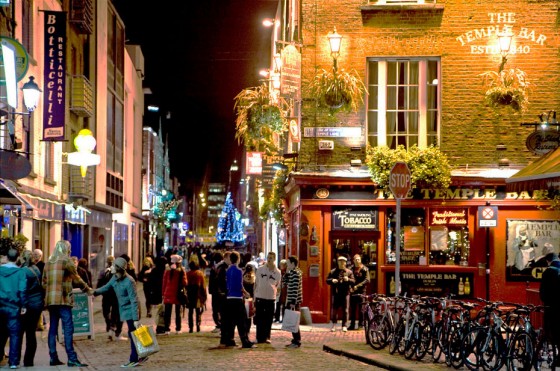Cultivating your own ‘Temple Bar’ district

As profiled in the previous entry, the Temple Bar quarter is a wildly popular and economically successful multi-block pedestrian-only district in Dublin, Ireland. The question is, how did a city begin to establish such a place to reap such fiscal and cultural benefits?
It starts with affordability and pedestrian-oriented urban fabric. As late as the 1980s, the state began to buy up and demolish buildings in the area in favor of a major bus terminus. While the plans were delayed due to opposition (not surprisingly), the purchased buildings were let out at low rents. We all know what happens when you have low rents in a neighborhood with potential beauty – the artists, creatives and entrepreneurs moved in. Further protests preserved the area for good, and in 1991 the government established the nonprofit Temple Bar Properties to continue the revitalization of the area into what is now Dublin’s preeminent cultural quarter. Its creative development framework was crafted by John Montgomery of Urban Cultures.
As for the multi-block pedestrian-only zone? The streets date back to medieval times and were thus initially planned as pedestrian-only. However, pedestrian-only streets are beginning to thrive in downtowns across the U.S., as documented here.
Photo of Temple Bar, Dublin, Ireland by Fernando Alamillo.

the medieval thing got me thinking…what’s more walkable than a city or village before any mechanized transport was invented.
obtuse thought but kind of fascinating when you think about most innovative green advances bringing society back to the medieval streetscape.
love it!
All cities these days built cultural quarters like these. Check for example the Northern Quarter in Machester and the Popcluster around the O13 music venue in Tilburg (Holland). Key to succes seems to be combiantion of hard- AND soft-infrastructure. Only the built environment is not enough
Temple bar is now a relatively generic urban ‘cool’ district. The chains saw the light and the old bars have been so popularized that it is not really worth battling the crowds of tourists. don’t get me wrong, the urbanism remains fantastic, but the authenticity has been lost. Even from 2006–my first visit there–to 2008 I noticed a large change.
nonetheless, Dublin remains one of the best cities I have ever explored.